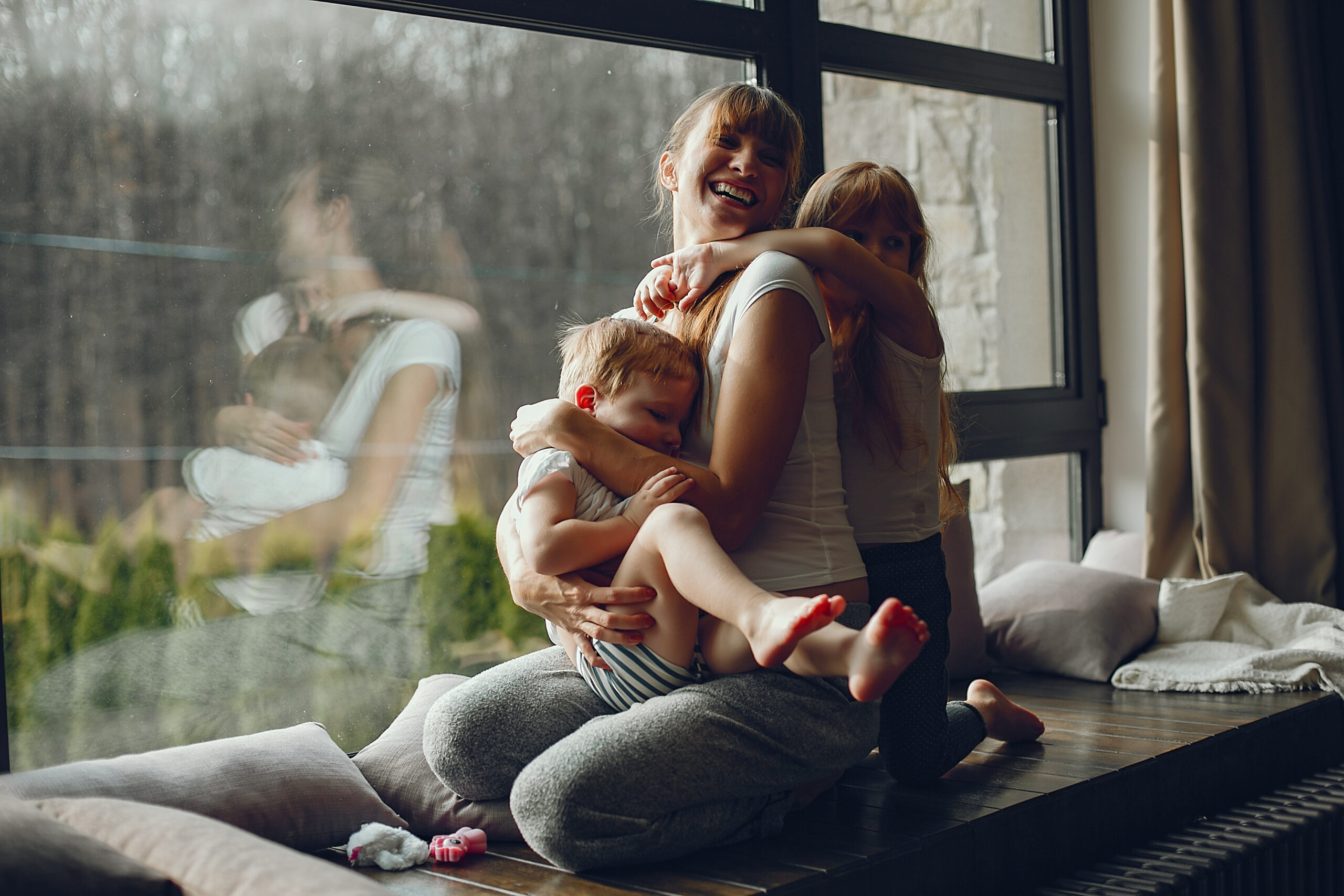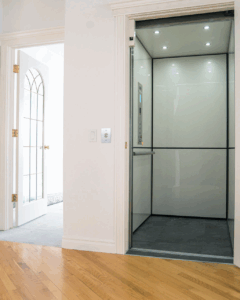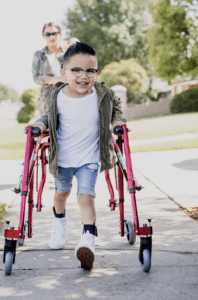Creating calm in the chaos
Divergent Design
Our Collective
Welcome to Divergent Design—we’re here to make life easier for people with physical and neurological differences.
Our collective of specialized businesses transforms homes, schools, and clinics into sensory-friendly, accessible environments that truly support people with diverse needs.
Studio YYC Interiors & Design
Michelle is a specialized designer who understands the frustration and uncertainty families experience when navigating accessibility and sensory needs in their homes, classrooms, and beyond. The overwhelming challenges of creating truly supportive environments for the special needs community require both expertise and empathy.
My area of expertise is creating safe, functional spaces tailored to the unique challenges of sensory processing, mobility, and communication differences. From wheelchair-accessible kitchens to sensory-friendly bedrooms, I blend specialized design principles with personalized style to create spaces where everyone can thrive and feel truly at peace.
AdaptAbility Store
AdaptAbility provides children, adults, and caregivers with the very best products for people with disabilities and special needs. Our welcoming, sensory-friendly store and website serve customers of all ages and abilities, while our knowledgeable staff make shopping effortless.
Founded by the mother of a special needs child, AdaptAbility is built on genuine passion for helping people navigate diverse challenges. We stand behind every product and service offered.
Our mission is being a trusted resource for exceptional products and information while educating parents, teachers, and community members to genuinely improve lives.
Shift Accessibility
Our team at Shift Accessibility includes Qualified Adaptiv Home Specialists who transform living spaces into beautiful, functional environments that cater to your unique needs and reflect your individuality. We create seamless harmony between accessibility and beauty through our proven process and meticulous attention to detail.
Whether you’re living independently, supporting an aging parent, or caring for a child with special needs, you deserve a home that adapts to your needs.
We support you from the initial plans through the final unveiling of your transformed space, with full project warranty.

Divergent Design
We’ve brought together everything you need in one place—from specialized designers who truly understand your challenges to the best adaptive products and certified renovators who get it right. Whether you’re navigating a recent diagnosis or searching for specific accessibility solutions in Calgary, we’re here to simplify your journey and connect you with professionals who truly understand how to create spaces where you can thrive.
-
Count on our team of specialists to create the solutions you need.
-
We’re here to help.
Get in touch!
Products, services, and advice for anyone who needs a little extra support.
Services Include:
- Autism-Friendly Makeovers – Transformations that support sensory and behavioral needs in homes, classrooms, daycare centers, dental and medical offices, vet clinics, group homes/residential facilities, and community spaces like libraries and cafe
- Specialized Products & Equipment – Adaptive clothing, therapeutic toys, classroom aids, mobility devices, and safety solutions
- Accessibility Renovations – Wheelchair-accessible modifications and aging-in-place solutions
- Home Elevator Installation – Expert retrofits for multi-level accessibility
- Sleep-Focused Bedroom Design – Optimized spaces that promote better rest and calm
- Custom Sensory Rooms – Complete design and installation of therapeutic sensory spaces
Adaptive Living Blog
Stories, tips, and hope for the journey
When Life Changes: The Critical Need for Accessible Home Retrofitting

Life rarely follows a predictable path. Whether welcoming a baby born with a disability, adapting to an acquired disability, or planning for aging-in-place, families often discover that their once-perfect home has become a barrier to independence and comfort. The solution isn’t moving—it’s retrofitting with accessible and universal design principles that can transform any space into a lifelong home.
The Retrofit Reality
Unlike building new with accessibility in mind, retrofitting existing homes presents unique challenges. Narrow doorways, step entries, inaccessible bathrooms, and multi-level layouts can suddenly become insurmountable obstacles. The emotional attachment to a family home, combined with the practical need for accessibility, creates a complex situation that requires specialized expertise.
Many families attempt basic modifications—installing grab bars, adding ramps, or widening a doorway. However, these piecemeal solutions often fail to address the comprehensive needs of long-term accessibility and can actually create new safety hazards when not properly integrated into the home’s structure.
Universal Design: Planning for Life’s Changes
Universal design goes beyond basic accessibility requirements. It creates spaces that work for everyone, regardless of age, size, or ability level. When retrofitting homes, this approach ensures that modifications enhance the living experience for all family members, not just those with specific needs.
Consider the bathroom—often the most challenging space to retrofit. A universally designed bathroom renovation might include a curbless shower with fold-down seating, adjustable-height fixtures, and slip-resistant flooring. These features benefit a person using a wheelchair, an elderly individual with mobility challenges, and even parents bathing young children.
Consider multi-level homes – an extremely limiting experience for some people. Elevator installation transforms multi-level homes into fully accessible spaces, providing barrier-free access to all floors without the emotional and financial cost of moving.
The Certification Advantage
Home retrofitting for accessibility requires specialized knowledge that goes far beyond general contracting skills. Building codes, accessibility standards, and the complexities of structural modifications in existing homes demand expertise that many contractors simply don’t possess.
The Canadian Home Builder’s Association’s Adaptiv Home Renovation program addresses this critical need. Qualified Adaptiv Home Specialists understand the nuances of accessibility retrofitting, from proper door swing clearances to the structural requirements for ceiling-mounted lift systems. They’re trained in both the technical aspects of accessible design and the sensitive nature of working with families facing life-changing circumstances.
Beyond Compliance: Creating Livable Spaces
Accessible retrofitting isn’t just about meeting minimum standards—it’s about creating beautiful, functional spaces that support independence and dignity. Certified Adaptiv Home Renovations specialists understand how to integrate accessibility features seamlessly into existing home designs. Working alongside specialized designers, these renovation contractors ensure that accessibility modifications enhance rather than compromise the home’s beauty.
They know which modifications provide the greatest impact, how to phase renovations for minimal disruption, and how to future-proof spaces for changing needs. This expertise can mean the difference between a home that accommodates a disability and one that truly supports an empowered lifestyle.
The Investment in Independence
Retrofitting a home for accessibility is an investment in long-term independence, safety, and quality of life. When undertaken by designers and renovators who understand the complexities of accessible design, these modifications can transform a house into a true home where individuals can thrive regardless of their physical abilities.
For families facing these challenges, seeking out contractors certified in Adaptiv Home Renovations ensures that their retrofit project will be completed with the expertise, sensitivity, and attention to detail that life-changing home modifications require.
Beyond Basic Needs: Essential Specialty Products That Transform Daily life
 After addressing the environmental challenges that families face when a child is diagnosed with ASD, many parents wonder: “What specific products can actually help?” The world of specialty products for individuals with special needs has evolved dramatically, offering innovative solutions that can transform daily struggles into manageable routines.
After addressing the environmental challenges that families face when a child is diagnosed with ASD, many parents wonder: “What specific products can actually help?” The world of specialty products for individuals with special needs has evolved dramatically, offering innovative solutions that can transform daily struggles into manageable routines.
Sensory Support Solutions
Sensory processing difficulties often require specialized tools that aren’t available in typical retail stores. Weighted blankets and lap pads provide deep pressure input that can calm an overstimulated nervous system. Noise-canceling headphones designed specifically for children with sensory sensitivities offer relief from overwhelming auditory environments.
Fidget tools have moved far beyond simple stress balls. Today’s sensory products include textured strips that can be attached to desks, chewable jewelry for oral sensory needs, and tactile cushions that provide necessary sensory input during sitting activities. These aren’t just “toys”—they’re therapeutic tools that help individuals regulate their sensory systems throughout the day.
Communication and Learning Aids
For children struggling with communication, specialized products can open new pathways for expression. Picture exchange communication systems (PECS), communication boards, and voice output devices help bridge the gap between internal thoughts and external expression. Visual schedules and timers provide structure that reduces anxiety and supports independence.
Learning becomes more accessible with products designed for different processing styles. Specialized pencil grips, weighted writing tools, and alternative keyboards accommodate fine motor challenges. Standing desks and movement cushions support children who need to move while learning.
Daily Living Independence Tools
Independence in daily activities often requires adaptive equipment. Specialized utensils with built-up handles help children with fine motor challenges feed themselves. Dressing aids like zipper pulls and button hooks promote self-care skills. Bathroom safety equipment and step stools with safety features support personal hygiene routines.
Sleep and Calming Products
Sleep challenges are common among individuals with special needs, leading to the development of specialized sleep solutions. Compression sheets provide gentle pressure, while blackout curtains and white noise machines create optimal sleep environments. Essential oil diffusers with calming scents can support bedtime routines.
Where to Find Quality Products
Finding these specialized products can be overwhelming for parents already managing complex needs. The AdaptAbility Store specializes in curating high-quality products specifically designed for individuals with disabilities and special needs. Their sensory-friendly shopping environment and knowledgeable staff understand the unique requirements of each product category.
Unlike general retailers, specialty stores like AdaptAbility focus on products that have been tested and proven effective for individuals with special needs. They offer expert guidance on product selection and understand the importance of quality, safety, and therapeutic value.
Moving Forward
The right specialty products can transform daily challenges into opportunities for growth and independence. By investing in appropriate tools and equipment, families can create supportive environments that promote success, comfort, and confidence for individuals with special needs.
Navigating Daily Life: The Hidden Domestic Struggles after an ASD Diagnosis

When a young child receives an autism spectrum disorder diagnosis, parents often focus on therapy appointments, educational plans, and medical consultations. However, the most immediate challenges frequently unfold within the walls of their own home, where everyday routines become complex puzzles requiring patience, creativity, and constant adaptation.
The Home Environment Transformation
Simple domestic tasks suddenly require strategic planning. Mealtime becomes a battlefield of sensory sensitivities, where the texture of foods, the sound of chewing, or even the color of a plate can trigger intense reactions. Parents find themselves researching specialized diets, investing in specific tableware, and sometimes preparing multiple versions of the same meal to accommodate their child’s needs.
Sleep routines, once taken for granted, often become exhausting ordeals. Children with ASD may struggle with transitions, sensory overload from bedtime sounds, or difficulty processing the day’s events. Parents frequently spend hours establishing calming bedtime rituals, only to find their child awake at 3 AM, unable to settle back to sleep.
Safety Concerns and Critical Home Modifications
Many parents discover their home environment requires significant modifications. Door locks may need upgrading to prevent wandering, a common concern for children with ASD. Sharp corners, breakable items, and even seemingly innocent household objects can pose unexpected dangers for children who may not understand cause and effect or have difficulty with impulse control.
The Sensory Processing Challenge
Sensory processing difficulties create some of the most complex domestic challenges. Fluorescent lighting can cause painful overstimulation, requiring careful consideration of lighting solutions throughout the home. Sound sensitivities mean that everyday noises—the hum of appliances, footsteps on hardwood floors, or even the texture of certain fabrics—can trigger intense reactions or meltdowns.
Touch sensitivities affect everything from clothing choices to furniture selection. A child may refuse to walk on certain floor textures, struggle with temperature regulation, or become distressed by the feel of common household materials. These sensory challenges often leave parents feeling overwhelmed and unsure how to create a truly supportive environment.
Communication barriers add another layer of complexity. Children with ASD may struggle to express their discomfort with environmental factors, leading to behaviors that seem inexplicable to parents. Visual supports, sensory zones, and communication-friendly spaces become essential elements of home design.
The Need for Professional Expertise
While many parents attempt DIY solutions, the complexity of sensory processing and communication needs often requires specialized knowledge. Professional designers who understand autism spectrum disorders can assess the home environment comprehensively, identifying sensory triggers and communication barriers that parents might not recognize. They can recommend specific lighting solutions, sound-dampening materials, tactile-friendly surfaces, and visual communication systems that transform the home into a truly supportive environment rather than a source of daily stress.
The Emotional Toll on Family Life
Perhaps most challenging is the emotional adjustment. Parents may feel isolated as social gatherings become difficult when their child struggles with new environments or unexpected changes. Simple errands like grocery shopping can become overwhelming experiences requiring careful timing and preparation.
Siblings also face unique challenges, often feeling confused by their brother or sister’s different needs or disappointed when family plans change due to sensory overload or meltdowns.
Finding Balance and Professional Support
Despite these challenges, many families discover unexpected strengths and develop remarkable resilience. However, creating an optimal home environment often requires expertise beyond what well-meaning parents can provide on their own. Professional guidance from occupational therapists, behavior specialists, and specialized interior designers who understand sensory processing and communication needs can make the difference between a home that causes daily stress and one that promotes calm, communication, and connection.
Specialized designers bring crucial knowledge about lighting solutions, acoustic treatments, tactile-friendly materials, and communication-supporting layouts that can transform family life. Investing in professional home modifications isn’t just about comfort—it’s about creating an environment where children with ASD can thrive and families can find peace in their daily routines.
The journey requires patience, flexibility, and self-compassion as families learn to navigate their new reality while building a loving, supportive home environment.


